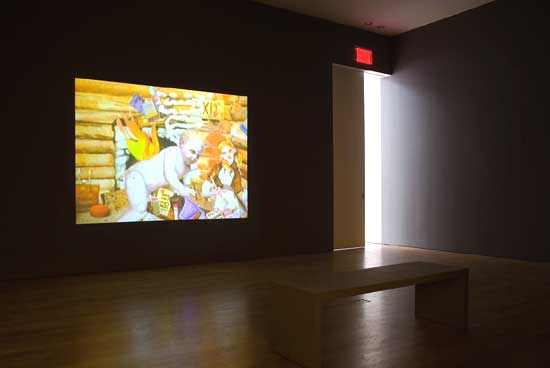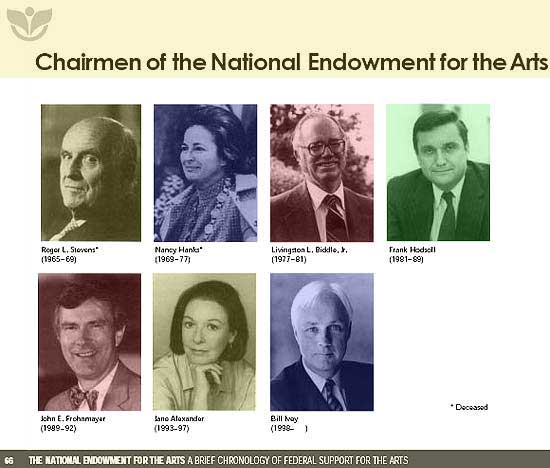The NEA In The Age Of Obama
Who Will Benefit From The Value Of Creativity
- 1987 – The Endowment’s budget is $165,281,000, for two years running, admission receipts for nonprofit performing arts events exceed those for spectator sports2.
- 1989 – John Frohnmayer becomes Chairman of the National Endowment for the Arts
- 1990 – Chairman Frohnmayer says: “We must be prepared to use creativity not as an adjunct to our education, but as its central component, because creativity will be the currency of the 21st century.”
- 1996 – The House of Representatives announces a plan to eliminate the Endowment
Art making takes everything you’ve got. Your studio is full and you’re ready to show your work, but then you hit the insurmountable. The success of your art making seems measured rather by who is showing your work, not by what the work is itself. You’re sinking into a suspicion that for generations your own family-of-(wo)man has been buying into a perceived exclusivity. Perhaps this sense of the apartness is a driving factor in the evolution of the exhibition space from the more traditional gallery to what was formalized in the 1980’s, by what the late Senator Helms raged against, the Artists’ Space Movement in the age of the uncensored NEA. Yet, clearly it seems to many of us that for all time, the artist-gallery relationship, or rather the perceived relationship, has spurred artists to seek alternatives, if only for the sake of integrity in the artist to artist relationship.
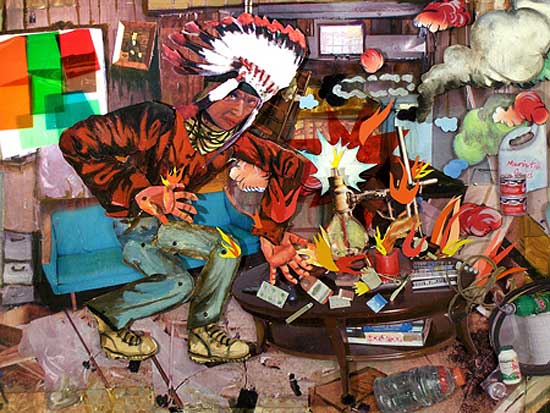
Martha Colburn at James Cohan Gallery (announcement)
I don’t often make it down to the city, however my spies do. Apparently, in the art capital of the world, while the future of art cannot be determined, the present itself is becoming increasingly unpredictable as well. On exhibition from September 6, 2008 to October 4, 2008 at the James Cohan Gallery (Chelsea, 533 West 26th Street, NYC) was the combination of the Chinese conceptualist Xu Zhen, Dutch sculptor Folkert de Jong and NYC based artist Martha Colburn. The program was presented as three separate exhibitions flowing together to create a conversation of artistic expression.
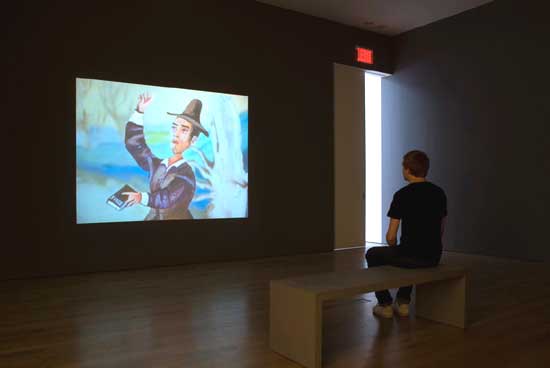
Martha Colburn at James Cohan Gallery, Chelsea
What follows includes quotes from Martha Colburn, Film artist and Elyse Goldberg, Director of the James Cohan Gallery. I’ll also include Stephen Cahill, multimedia artist, Turners Falls MA and Ric Sanchez, Painter and multimedia artist, Orlando Florida on the issue of the perceived relationships between artists, galleries and art making in the USA today.
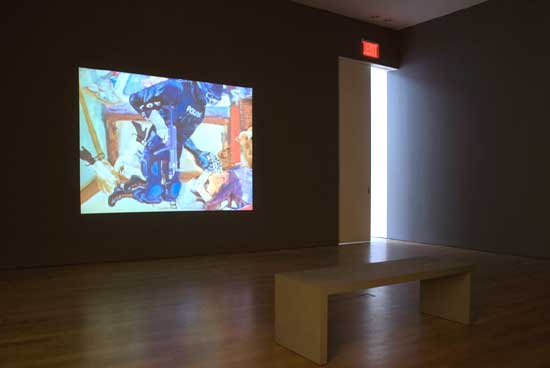
Martha Colburn at James Cohan Gallery, Chelsea
Martha Colburn (NYC): Art can’t be In a cave to be seen by others and I think the gallery is a great place for artists which do not, for instance, show in museums or caves…I show in cinemas, music venues, lots of squats in Europe and festivals, the web, and galleries, and now I remember, I have shown in a cave in France more than once, so I guess I have to re-call the cave comments.
Stephen Cahill (Turners Falls): I’ve never shown in a gallery, I’ve submitted to a couple places, either ‘we’re not showing that kind of work’ or ‘its too big.’
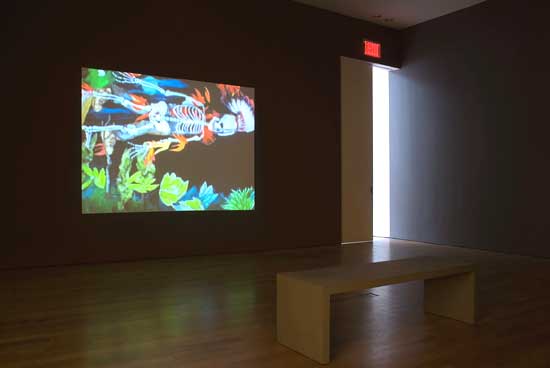
Martha Colburn at James Cohan Gallery, Chelsea
What is the future of the artist-gallery relationship and what is this relationship now? Emerging artists often talk about galleries as they might describe the pyramid rituals of the Pharos. Few actually even know the real process of creating a relationship. Perhaps the most admirable artist is one who produces art for arts sake alone and does not care if others see or interpret their work. But there are many more artists who crave blessings for turning the pedestrian into a rarity.
Stephen Cahill: It was one of those things where it seemed unattainable. If you think about the large amount of people producing work
and the small amount of venues, it’s a game of odds almost.
Martha Colburn: They saw my film at Art Basel Statements, which is a competitive show, next to the big hall of big shots…
Elyse Goldberg (NYC): We saw her work (Martha Colburn) at Art Unlimited in Basel Switzerland.
When discovered by James Cohan Gallery, however, Colburn had the benefit of inclusion in the Basel Art Fair. By contrast, Cahill does not have the benefit of being featured in a highly respected exhibition to bring attention to himself. Take this as a sample of the often complicated way in which artists reach larger audiences. They may need to be previously established at some level and, despite exceptions, rarely do commercial galleries put the time into an artist based purely on the quality of their work. This, creating a level of perceived difficulty.
Ric Sanchez (Orlando): I think galleries are too rigid and demanding. They want you to be established before they offer you space.
Obviously galleries can’t accept every artist who sends work. Though, with the growing percentage of artists taking exhibition space into their own hands, will the artist-gallery relationship, and in turn the gallery-collector relationship, change?
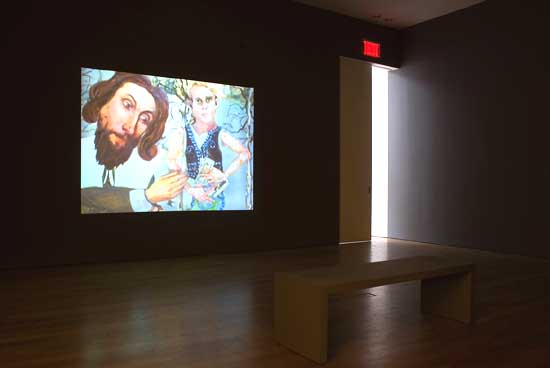
Martha Colburn at James Cohan Gallery, Chelsea
Many artists feel that “obscurity” may be the highest level of visibility their work ever achieves. Euro-centric art history apologizes for the “cultivation” process with myths of great masters wrestling with talent arriving later at a larger more visible stage that takes an entire lifetime to achieve. Or, more frequently, occurs after death. Such is the acceptance of an invisible hand chaining a series of seemingly random events to an inevitable accomplishment of having work presented before a wider audience. In today’s click driven post Warhol media minute it has become a miniscule accomplishment. In such a paradigm an artist’s primary goal is arranged around having their work seen by the maximum number of people. Those who excel at this often do not know what they have achieved and those who have not attribute the fact to the insurmountable.
Martha Colburn: I was just so happy to have the film show in NY … I don’t think I’ve ever felt obscure. When I really got rolling, I just made lots of records and books and films. I got my more professional “art-world…” I got the ball rolling in Europe for five years before coming to NY and made installations and shows all over the world.
What does showing in a gallery setting as opposed to an improvised exhibition space present for the artist? Each day artists become more resourceful about where and to whom they present their work. Counter to the gallery paradigm, this strategic approach brings more profound meaning to the work. Yet it is the prospect of a sale that draws artists back to the gallery experience and with it the perceived status they achieve through price.
Elyse Goldberg: We have beginning collectors, collectors who have known the gallery for many years and/or come here specifically for artists that they are interested in collecting. This is quite nice, because in the process we can introduce them to other artists whose work they may not be aware of. Of course, museum curators and directors as well as art consultants frequent the gallery.
Gallery exhibitions are one way emerging artists build a collector base. Alternative venues rarely provide a draw from more established artists’ work and collectors have difficulty learning about them. While finding venues is a necessity, equally necessary is finding new ways to attract the attention of collectors, curators and museum directors to them. Though emerging artists believe that their ultimate goal is to produce a living income from their work, artists who’s work stands on its own may feel the opposite. The ultimate goal being to improve their work; to reach to a higher level of artistic expression and human understanding. Accordingly art would simply exist to present ideas and feelings to a public audience.
Stephen Cahill: I’m not truly all that interested in showing in a gallery anymore, my works sell in the venues I’m putting them in now and I don’t need to sell the work. I do it for me.
Elyse Goldberg: The goal of exhibition is always to present the viewing public with works that illuminate the artists’ ideas. Hopefully these works will raise questions. A positive or negative response is always welcome.
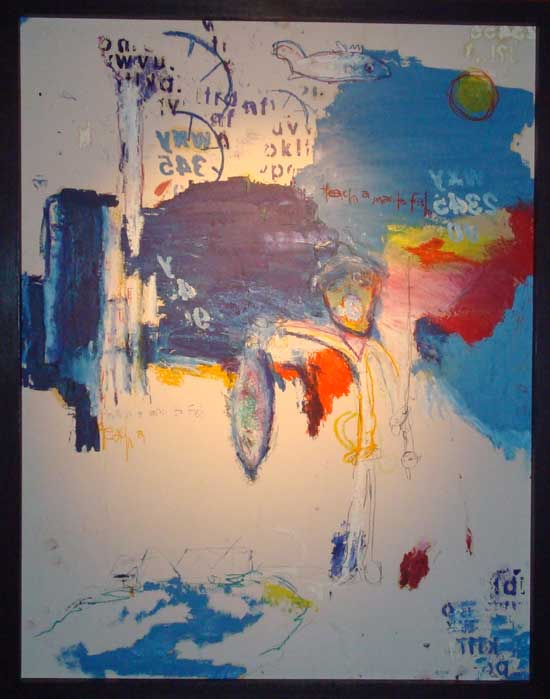
Stephen Cahill, Turners Falls, MA
Galleries in more obscure locations like the Nashawannuck Gallery in Easthampton MA or The Gallery In The Woods in Brattleboro Vermont use space differently than galleries in more high profile locations. In order to remain viable they present artisans and craftsman made objects which provide financial stability while reserving space to show artists with more experimental ambitions. The ability to present works based solely on feeling or expression is a luxury mainly afforded by co-presenting other objects for sale in the setting. Though these venues present art of no less quality this further perpetuates questions about the artist-gallery relationship and the work’s relative appeal to viewers and potential collectors.
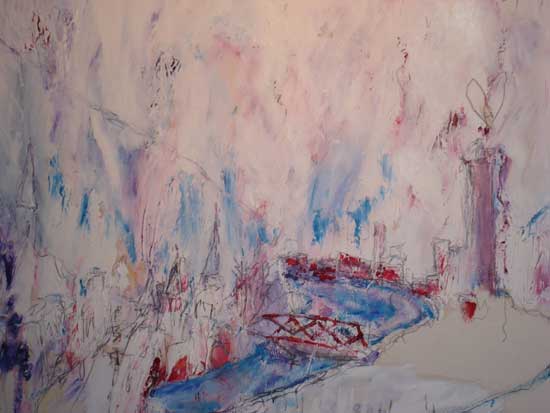
Martha Colburn: Taste does not matter, at the end of the day, I think the artists determine most everything. With original, motivated and innovative work taking the stage because it is just those things. For real. Not for fake.
Ultimately I think alternative venues serve as locations that hold honesty tightly in their hands. To quote Lowell Downey1. of Hatley Martin Cultural Forum, San Francisco, 1992, “Freedom of expression is probably the second most significant thing that art organizations have yet to achieve. Freedom of expression cannot be tied to financial support.” Or, Veronica Enrique1., artist organizer, San Diego, 1992, “But our greatest accomplishment has nothing to do with the material attributes of our spaces or what is done within them. Rendering a true reflection of artists in their society is how artists’ organizations have created an attitude.”
Yes, galleries like the James Cohan Gallery, Gallery In The Woods and Nashawannuck Gallery do important work and can be different, presenting challenging ideas to the public for their view, but generally commercial spaces coerce by default, because they perpetuate the accurate perception of an industrial pyramid.
Nayana Glazier: What do you think galleries’ expectations are for artists and their work?
Martha Colburn: That it be great and get better, or I guess they trade you in for someone else. I would do the same.
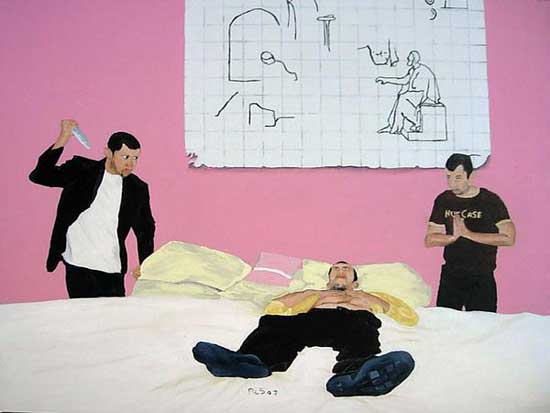
Ric Sanchez, Orlando, Florida
It is this that creates the fear in emerging artists. They fear the initial rejection and if they are accepted to present their work they fear possible rejection following on. I have always subscribed to the philosophy that the worst thing that can happen is the word “NO” and it is by that very word that the impression of the impossible goal of the gallery finds its vector.
Martha Colburn: I didn’t do the galleries for many years, but that’s because my scene was (that) underground, but it still is, I mean one should not exclude the other. It’s fine if people make that choice, but I don’t see why in such a big world excluding any venue makes any sense.
To quote Helen Glazer1. of The Rosenberg Gallery, Baltimore, 1992 “Here in Baltimore, 15 years ago, it seemed as if there were hardly any mid-career artists around. Unless they had teaching jobs, ambitious artists tended to flee to a larger metropolis – such as New York – at the first opportunity. I credit the artists’ spaces that came on the scene about 10 years ago with helping to change the climate for artists, encouraging them to stay and contribute to the cultural life of the community… artists in Baltimore and Washington by and large might as well have been 400 miles apart rather than 40, but as they began to exhibit together in the alternative galleries, the two communities became acquainted, to our mutual benefit.”
That really is the hit of it all. If artists are making the work, why do we in fact care what type of venue it is presented in, who sees it and if it ever sells? Should it always be at its core about the creation (of the art) above all else? Can satisfaction come from presenting ones art to an audience, or come from the recognition that others feel the same way, or have had the same experiences? Ultimately human experience is universal to humanity, art being a large carrier for the sharing of those experiences. The ‘movement’ of artists working for themselves and providing their artist run venues for presentation is hardly a new one.
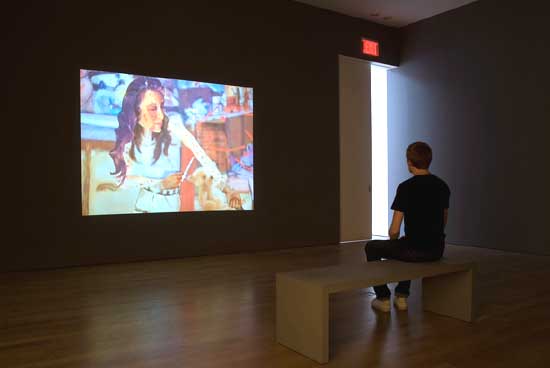
Martha Colburn at James Cohan Gallery, Chelsea
Martha Colburn: Creativity put to the purpose of art and not industry or the exploitation of other people or for the evils of the world can be nothing but a good thing, be it for sale or not. The ‘direction’ of art, the world’s too big to figure that out.
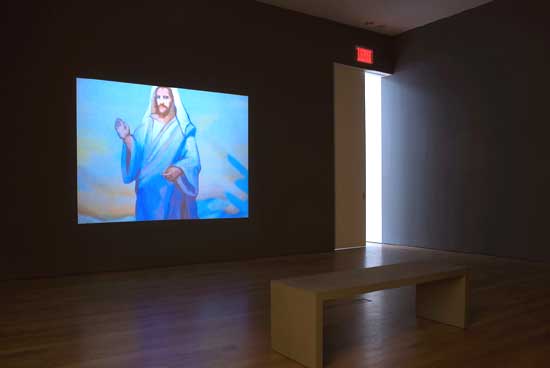
Martha Colburn at James Cohan Gallery, Chelsea
By contrast I quote Edmund Cardoni1., Hallwalls, Buffalo, 1992 “Despite all the efforts of artists’ organizations and the artists we serve, we failed to change society even enough to ensure our own continued survival, to preserve our little niche. We thought the alternative spaces we had created (both literally and in the larger sense) were a permanent feature of the American landscape, but we have found out they can be closed. Those of us not burnt out, with something still left to sacrifice, and with the resourcefulness of outlaws, will have to take to the hills and carry on the fight. Allow no quarter. Don’t try to appease them. Corporations and governments will not help us now. Even the Constitution will not protect us. It’s a whole new ballgame.”
Or, Linda Burnham1. of Highways, Santa Monica,1992, “…I’m sure it is considered politically incorrect to admit this, but there is not one artists’ organization I know of that is more than two steps from disaster at all times. It is no wonder that the smallest puff of wind from Jesse Helms has sent us reeling. Organizations
that were borderline last year are now way behind and exhausted from dealing with the censorship crisis, let alone the failing economy that has reduced subscriptions, memberships, donations, and ticket sales.”

While the direction of art may be unpredictable all we, as a community, are left to do is to shape our own direction. Keeping our work as integral as possible, forming our own exhibition spaces or working with the few galleries who are on the same page.
Elyse Goldberg: I believe that all artists, like musicians, writers, filmmakers, any person who creates anything, would hope that you have produced something that has ’something’ to say, that can touch another person’s awareness. That can have an effect whether it engages, lifts one’s spirits or effects profound indignation. Basically it is to communicate. Selling the work is always amazing, no matter how many times I have witnessed it. People who acquire art are to be acknowledged. They keep the fires burning, and their belief in the power of art is inspirational. This may sound naïve, as everyone is obsessed about talking about the market and high prices, low prices or no prices. I believe In the basic presumption of art which is always to try to challenge the status quo and take us on a journey.
This is perhaps the most essential part of this whole question. What is art’s purpose in the context of the artist-gallery relationship and the artists who develop alternative venues and progressive galleries? Is it along Elyse Goldberg’s suggestion to fulfill the need to present work and affect others with expression?
One might wonder what those obsessed with the desire to achieve presentation at a perceived “high level” gallery are truly after. I too have always sustained that the goal in my own work is to express and evoke a feeling in a viewer, positive or negative; for me, this effect makes the work a success, regardless of the venue or number of viewers. But, is It essentially this idea and desire that at times sees artists organizing their own venues and in essence their own directions? How did artists fail to effect the direction of the gallery system as we know it today?
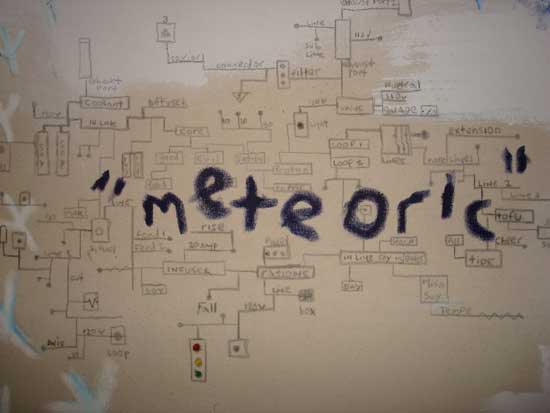
Stephen Cahill, Turners Falls, MA
I quote Joshua Selman of Artist Organized Art, 2007 “Dealers say to artists, ‘We want you to think creatively. Spend all your studio time thinking, feeling, practicing as creatively as possible. We are looking for only the most creatively minded artists. Meanwhile, we (the commercial dealers) will think strategically.’ After ten years, who do you think is going to come out on top?”
1. Organizing Artists : A Document and Directory of the National Association of Artists’ Organizations by Dc National Association of Artists’ Organizations, Washington, published 1992
2. National Endowment for the Arts (2000). The National Endowment for the Arts 1965-2000: A Brief Chronology of Federal Support for the Arts. Washington, DC: National Endowment for the Arts.
Elyse Goldberg, Director James Cohan Gallery, New York, NY http://www.jamescohan.com
Martha Colburn, New York, NY, Multimedia Artist http://www.marthacolburn.com/
Stephen Cahill, Turners Falls MA, Multi Media Artist doosel9 at yahoo dot com
Richard Sanchez, Orlando FL, Multi Media Artist and Painter http://www.myspace.com/artbytherls
James Cohan Gallery 533 West 26th Street New York NY 10001 Tel 212.714.9500 Fax 212.714.9510 Hours Tuesday – Saturday, 10am – 6pmhttp://www.jamescohan.com
Nashawannuck Gallery, 40 Cottage Street, Easthampton, MA 01027 http://www.nashawannuckgallery.com
Gallery in the Woods, 145 Main Street, Brattleboro, VT 05301 http://www.galleryinthewoods.com/
